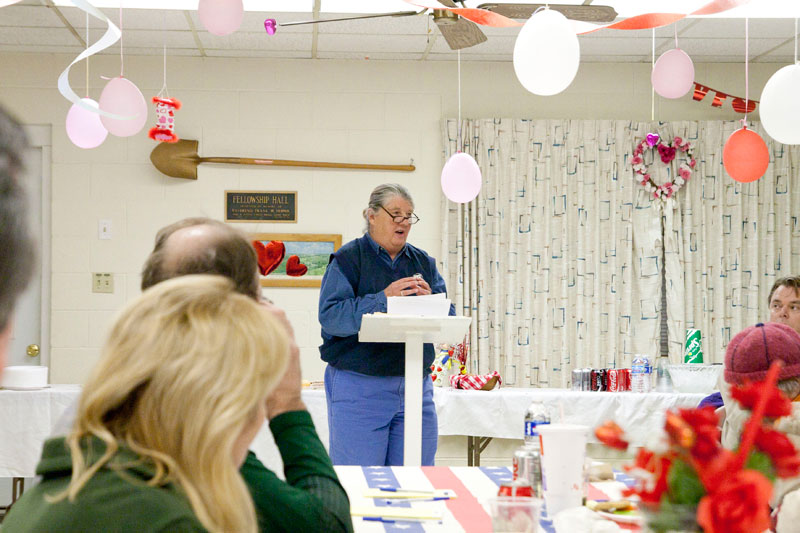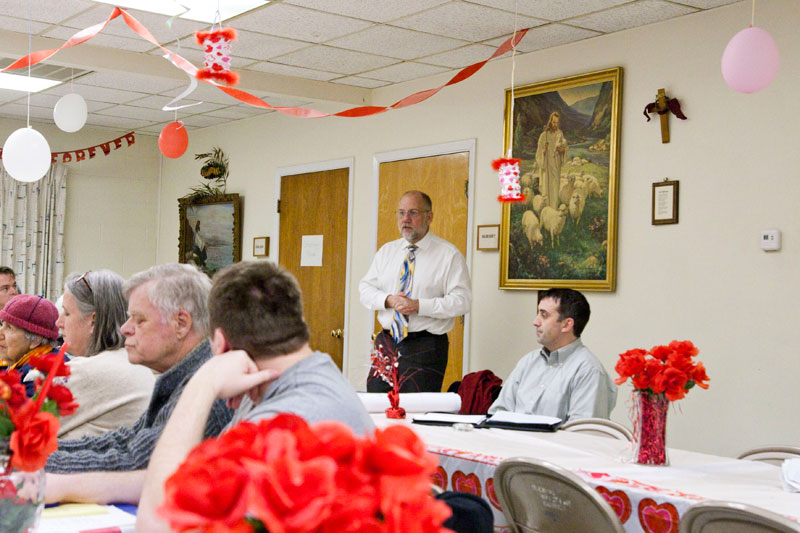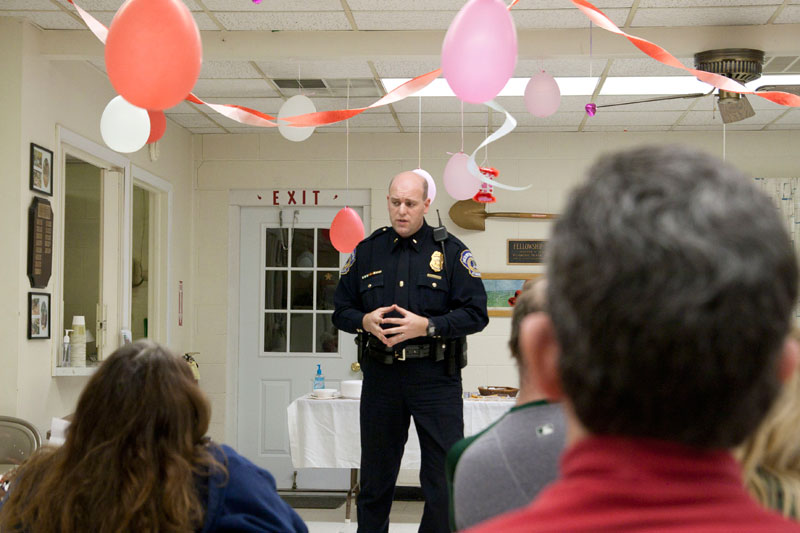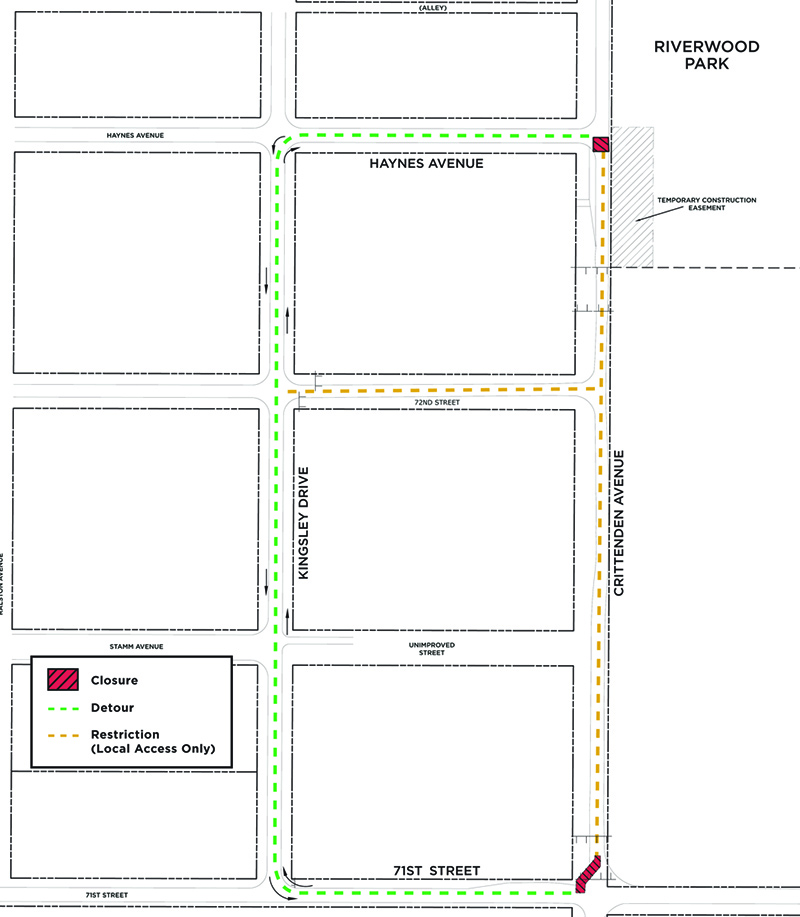
|
Broad Ripple Random Ripplings

The news from Broad Ripple
Brought to you by The Broad Ripple Gazette
(Delivering the news since 2004, every two weeks)

|
| Brought to you by: |

|

|

|

|

|

|
Converted from paper version of the Broad Ripple Gazette (v08n04)
DPW speaks at Ravenswood meeting
posted: Feb. 18, 2011
The Ravenswood neighborhood meeting was held on February 7, 2011, at the Glendale Christian Church, located at 1788 Haynes Avenue. There were about 30 in attendance. The meeting was called to order by Ravenswood neighborhood association president Susan Stamm. The featured speaker at the meeting was Bob Masbaum, Administrator of Environmental Engineering at City of Indianapolis Department of Public Works.
Susan Stamm and Bob Masbaum at the February Ravenswood Neighborhood Meeting.

As background to the project Masbaum discusses, I have included a description of the DPW project from their website:
In 2009, the Indianapolis Department of Public Works (DPW) began design of the new Castleton Relief Sewer. When completed, this relief sewer will increase sanitary sewer capacity and eliminate raw sewage overflows into Howland Ditch.
The new 14,000-foot sewer will be located primarily along 75th Street, Harbour Point Drive and Crittenden Avenue between Allisonville Road and 71st Street and will run parallel to the existing Castleton Interceptor. The Castleton Interceptor, which carries sewage to the city's treatment plant, serves those living in Washington Township.
For many years, sewers in the Castleton area have been overloaded during wet weather. When the sewers reach full capacity, raw sewage could spill into local streams and rivers or back up into basements. The Castleton Relief Sewer will alleviate capacity problems by doubling the amount of sewage being transported for treatment from 13 to 26 million gallons per day.
Phase I, located west of Keystone Avenue, is expected to begin construction in fall 2010 and last approximately 12 to 18 months. Trenchless microtunneling methods of construction will be used primarily.
Phase II, located east of Keystone Avenue, will build a gravity sewer using primarily open-cut construction methods. Construction will begin in late 2011 or early 2012 and last approximately 12 to 18 months.
The Castleton Relief Sewer must be fully operational by December 2013 in order to meet the requirements of the consent decree schedule, as required by state and federal regulations. Planning, design, construction and inspection for the project are estimated to cost approximately $15 to $20 million.
Project Benefits: Eliminate raw sewage overflows to Howland Ditch, Improve water quality in Howland Ditch and the White River, Eliminate basement backups in the Castleton area, Create additional capacity needed to allow homes to connect to the sewer as part of the Septic Tank Elimination Program (STEP), Meet requirements of Indianapolis' consent decree with the U.S. Environmental Protection Agency (EPA).
"We have a project that is getting ready to start here at 71st and Crittenden," explained Masbaum, "work its way just north of the [Howland] ditch, go east along the north side of the ditch, to just the [east] side of Keystone, that's the first phase. It will be constructed using micro-tunneling."
Masbaum said that there will be disruptions of the ground at the holes where the tunneling machine is working, the bore pits, but that there will not be open trenches or trucks hauling dirt out. He also said that a public meeting will be held on February 16 at the Glendale Library where people can meet with the contractor and the inspectors for the project. The Gazette will have attended that meeting by the time this paper is released, and will report on the findings in the next edition.
Masbaum described three concerns that had been addressed to DPW. First, was a concern that dumping of dirt would affect the floodplain. The contract has been modified to prohibit the contractor from disposing of fill dirt in the floodplain area. Second was a concern that the construction would change the levels of the area lakes. The contractor is required to monitor the water level of the lakes with a staff gauge to assure that the levels are not dramatically affected by the construction process. Third was concern over the impact of the new sewer line on the existing lift station. Masbaum stated that the lift station has been evaluated and upgraded recently. It is capable of handling 42 to 54 million gallons per day. The maximum flow expected after the addition of the new line is 41.1 million gallons per day.
The next meeting of the Ravenswood Neighborhood is planned for April 23, 2011, at Glendale Christian Church.

| Brought to you by: |

|

|

|

A DPW diagram showing the construction areas, street restrictions and detours in the Ravenswood area during Phase 1 of the Castleton Relief Sewer project.

| Brought to you by: |

|

|

|
alan@broadripplegazette.com

|

|

|
| Brought to you by: |

|

|

|
| Brought to you by: |


